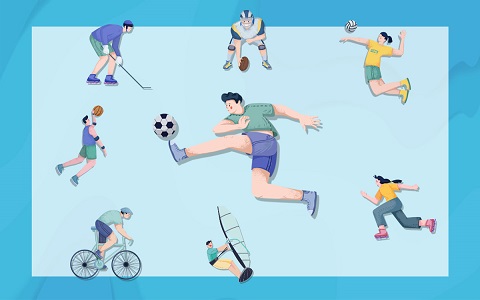Individuals
and Societies
 (资料图片仅供参考)
(资料图片仅供参考)
in Grade 6
At ISNS, Individuals and Societies (I&S) is a multi-disciplinary subject that students take in MYP and DP. We plan teaching and learning in a fun and engaging way to ensure that our students from G6 all the way to G12 are fostered their inquiry and investigation skills, as well as critical thinking, and communication skills.
This week, we interviewed our Grade 6 Individuals and Societies (I&S) Teacher MsGretchen to find out about theI&S subject inLower MYPand how it builds the fundation through MYP to DP.
1
Framework and
Teaching & Learning
Individuals and Societies(I&S) takes up about 12% of students" academic time.
In I&S, we try to build knowledge and understanding, investigation skills, communication skills and critical thinking skills. In most units, we go through a cycle of building knowledge around a subject, then the students choose something to investigate and follow a research cycle, in which they decide what they are going to study or investigate.
After that, they build and follow an action plan to further their time management. The students collect all their research in a systematic way for them to communicate their findings in a real project (a speech, a paper or a website etc). At last reflection, it is important to reflect on how the research went and then build a plan for improvement in the future.
2
Connection from LMYP to UMYP to DP
In lower MYP grade 6 through 8, we try to build their skills strongly by focusing on ATLs.
We use time management and effective notetaking, which helps students build organizational skills that they must have.
The first time when students started their I&S style research was PYPX, when they were in grade five. I always tell my students that every time a unit in Grade 6 is like doing a PYPX. Repeatedly, students follow that same process as they do in MYP through the years.
PYPX
By the time they get to grade nine, students need to complete a community project that requires all the organisation skills and communication skills that we"ve been building in I&S. Then in Grade 10, they will have the personal project when they could utilize all their skills and experience.
MYPX
Further in DP, students will engage in more of their own interests and investigations and communications about their learning in their knowledge and essays. Certainly I&S always feeds into the spirit of IB and the knowledge building and creating the lifelong learner from an intrinsic motivation standpoint.
✦+
+
A Typical Unit
In grade six, we"re doing a full research project right now on human migration.
We spent the first part of the unit just learning how to take notes, using Cornell note-taking system and learning migration stories. We then developed a list of questions that we want to know when we learn about somebody"s migration:
Where did they come from,
Where did they go,
Why did they move and
What were the benefits and challenges
https://www.cornell.edu/
Students can get a well-rounded human version of migration and learn about migrations that have happened all throughout the world. They build this knowledge base and bring it in the second part to Shenzhen China.
Shenzhen is a city that has all been migrated to. It grew from four hundred thousand people in 1980 to fourteen million now. Instead of researching specific stories about migrations, they are writing stories about really immigrants. Students need to choose one person to interview and ask all those questions we"re looking for when we were researching the other migration stories.
They collect those and then they create a website about that person"s migration story. It includes the story, the successes, the benefits, the challenges, photographs, a map of the migration, and a timeline of how the migration happened.
At the end, they will include a knowledge reflection where they talk about what they knew before they started the unit and then what they know now.
A sample process of refection:
How did the research go
How did the time management go
What can you do better in the future
Once the website is completed, students will share it out on their tablet to the school. They will receive feedback from all the teachers.
Tips for learning I&S
“To teach my students short-term time management using the Pomodoro method, which is that you work for 20 to 25 minutes, then take a 5-minute break. It kind of seems obvious but students don"t know that. If I can build that practice in, that is something they can use all the time. It really helps them get their work done and engage with their work. It is really important for an 11- and 12-year-old brain.”
滑动查看英文
6年级人文社会学
在ISNS,人文社会学科(I&S)是学生在中学和高中阶段学习的一门多元学科。我们以有趣和引人入胜的方式规划和教授科学,以确保培养6到12年级学生的探究和调研研究技能,以及批判性思维和沟通技能。
本周,我们采访了6年级人文社会学科 (I&S) Gretchen 老师,了解 I&S 学科如何从初中低年级过渡到初高中高年级。
1
课程框架和教与学
I&S在初中阶段的比例是约占学生12%的学习时间。
在I&S,我们竭力于建立知识和理解调查技能、沟通技能和批判性思维技能。在大多数单元中,我们会进行一个围绕某个主题构建知识的循环,然后学生选择要调查的内容并遵循研究循环,在这个循环中他们需要决定学习或调查的内容。
之后,他们制定并遵循行动计划以进一步进行时间管理。学生以系统的方式收集他们所有的研究成果,以便他们在实际项目(演讲、论文或网站等)中交流他们的发现。最后学习反思,重要的是要反思研究的进展情况,然后制定未来的改进计划。
2
中学到高中的衔接
在初中低年级阶段( 6至8年级),我们会通过关注学习技能来增强学生们的学习能力。我们使用时间管理和有效的笔记记录,帮助学生培养他们做研究必须具备的组织能力。
学生们第一次开始他们的I&S风格研究是在小学五年级毕业展的时候(PYPX)。我总是告诉我的学生们,每次进行6年级的单元研究,就当做PYPX来做。多年来,贯穿整个MYP的过程中,学生们一直采用同样的方法。
PYPX
到九年级时,学生需要完成一个社区项目,该项目需要用到在 I&S 中培养的所有组织技能和沟通技能。然后在10年级,他们将有个人项目,他们可以利用所有的技能和经验。
MYPX
在DP的进一步发展中,学生将更多地参与他们自己的兴趣项目以及关于他们在知识和论文中学习的调查和交流。当然,I&S始终从内在动机的角度融入IB精神以及知识构建和培养终身学习者的精神。
✦+
+
典型单元
在六年级,我们正在做一个关于人类迁徙的完整研究项目。
我们在本单元的第一部分学习了如何做笔记、使用康奈尔笔记法,学习迁移故事。然后我们制定了一份我们想学习和了解的关于移民历程的问题清单:
他们从哪儿来
他们去了哪里
他们为什么要迁移
迁移后的好处和挑战有哪些
康奈尔笔记法:https://www.cornell.edu/
学生可以获得全面的人类迁移版本,并了解世界各地发生的迁移。他们建立了这个知识库,并在第二部分将研究对象放在中国深圳。
因为深圳是一个外来人口聚集的城市。它的人口从 1980年的40万增长到现在的1400万。与单单研究关于移民的具体故事不同的是,学生们需要撰写关于真正的移民的故事。学生需要选择一个移民来深圳的人进行采访,提问所有的关于迁移他们想知道的问题。
他们收集这些信息,然后创建一个关于这个人迁移故事的网站。网站包括故事、成功的过程、迁移后的好处、挑战、照片、迁移地图以及发生的时间表等。
最后,他们进行知识反思,讨论对比开始该单元之前所知道的知识和现在所知道的知识。
知识反思的示例过程:
大家研究进展的如何
同学们时间管理是怎么进行的
将来可以做什么更好
网站完成后,学生将在平板电脑上将其分享给学校,然后他们会收到所有老师的反馈。
学习人文社会学的小建议
“使用番茄工作法教我的学生进行短期时间管理,即工作20到25分钟,然后休息5分钟。这看起来很明显,但很多学生不知道,如果他们可以养成这个习惯,一直使用这个方法,确实可以帮助他们高效完成工作并投入工作,这对于11岁和12岁学生的大脑发育来说真的很重要。”
关键词: ISNS




















 营业执照公示信息
营业执照公示信息